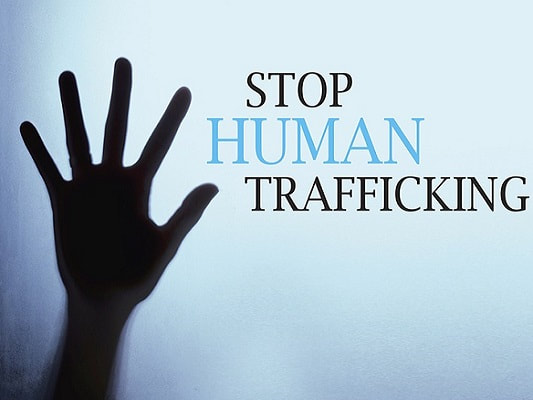|
by Amy Kleinschmit, Chief Compliance Officer
January was proclaimed National Human Trafficking Prevention Month. Per the U.S. Department of State, “There are estimated to be more than 27.6 million people — adults and children — subjected to human trafficking around the world, including in the United States. Traffickers often take advantage of instability caused by natural disasters, conflict, or a pandemic to exploit others.” The Financial Crimes Enforcement Network (FinCEN) recently issued an alert on “Human Smuggling along the Southwest Border of the United States” which can be found here. According to the Homeland Security Operational Analysis Center, human smuggling along the SW border generates an estimated $2 billion to $6 billion in yearly revenue for illicit actors. As explained in the alert, Human smuggling involves two main phases: solicitation and transportation. During the solicitation phase, smugglers advertise their services, for example, by posing as seemingly legitimate businesses such as travel agencies or work recruiters, and build trust with migrants seeking smuggling services. During the transportation phase, smuggling networks often use social media platforms— particularly those that offer end-to-end encrypted communication—to coordinate along the route. This alert provides red flag indicators to help financial institutions better identify transactions potentially related to human smuggling. Some of these Red Flags include –
FinCEN requests that financial institutions indicate a connection between the suspicious activity being reported and the activities highlighted in this alert by including the key term “FIN-2023- HUMANSMUGGLING” in SAR field 2 (Filing Institution Note to FinCEN), as well as in the narrative, and by selecting SAR field 38(g) (human smuggling). Financial institutions that suspect human trafficking activity should also select SAR field 38(h) (human trafficking) and highlight other advisory or alert keywords in the narrative, if applicable. This recent Alert builds upon FinCEN’s previous 2014 and 2020 human smuggling and human trafficking advisories. In 2020, FinCEN issued this Supplemental Advisory on identifying and reporting human trafficking. As discussed in the 2020 Advisory, “Unfortunately, in addition to the horrific toll on victims and their families, their very lives, dignity, and livelihood, human trafficking is now one of the most profitable and violent forms of international crime, generating an estimated $150 billion worldwide per year. In the United States, human trafficking now occurs in a broad range of licit and illicit industries (e.g., hospitality, agricultural, janitorial services, construction, restaurants, care for persons with disabilities, salon services, massage parlors, retail, fairs and carnivals, peddling and begging, childcare, domestic work, and drug smuggling and distribution).” This advisory provides new information to assist in identifying and reporting human trafficking, and to aid the global effort to combat this crime and two illustrative recent case studies. Credit unions should review this information to be able to identify and report any potentially suspicious activity related to human trafficking and human smuggling. Red flags included in the Advisory identify behavior indicators and financial indicators, for example, some financial indicators include:
There are many resources available for additional information on human trafficking and human smuggling, including this report from the Polaris Project – “On-ramps, intersections, and exit routs: a roadmap for systems and industries to prevent and disrupt human trafficking.” Polaris is engaged in eradicating modern slavery by systemically disrupting the human trafficking networks that rob human beings of their lives and their freedom. Credit union of all sizes play an important role in identifying and reporting transactions related to human trafficking activities based on their observations when interacting with customers and their monitoring processes. This report focuses on the private sector, such as banking, and how it intersects with human trafficking. As discussed in the introduction, “The more that is known about the business plans of human trafficking, the more possible it becomes to prevent and disrupt the crime and help survivors find freedom. The insights here are gleaned from those in a position to understand the nuances of each business intersection point – the survivors who lived the experience.” This report builds on Polaris’ previously issued report, the Typology of Modern Slavery. This report classified 25 distinct types of human trafficking business models in the United States. These categories range from ag and animal husbandry to carnivals, commercial cleaning, construction and domestic work. Several categories also relate to sex trafficking, such as illicit massage businesses, pornography, escort services, and bars, strips clubs and cantinas. A list and description of all categories can be found on Page 6 of this report. Polaris states that, “a strategic approach to ending human trafficking includes understanding the ways each of these systems enables or intersects with potential traffickers or victims.” On page 8 there is a matrix that lists the 25 types of human trafficking and how that category intersects with eight systems/industries. The financial services industry, which obviously includes credit unions, intersects with 22 of the 25 categories of human trafficking. While the entire report is very important, discussion relating to the financial services industry starts on page 37. As noted above, this report is built on survivor experience. One quote that caught my attention, “One focus group survivor who made at least four separate deposits totaling over $5,000 into her recruiter’s account in the Philippines, pleaded, “I wish [someone] would have asked what all that money was for.” (page 43). Another survivor quoted in the report shared this story regarding credit history, “...he would focus strictly on girls that were 17 about to turn 18 just because their credit would be fresh. He could have them get credit cards. Versus someone who’s already been in the life, even if they’re only in their early 20’s... [their credit] would be jacked up already. So he started focusing on girls not only for the profit margin because of their age, but because he could work with their credit. That would be a recruitment question before they come: “How’s your credit?” Because he started realizing credit was important for things like getting a house or things like that in the future. He knew he couldn’t do that with just cash.” (page 44) Credit unions are in the position to assist with preventing and disrupting this industry that is impacting an estimated 27.6 million people globally. As always, DakCU members may contact Amy Kleinschmit with any compliance related questions. Comments are closed.
|
The MemoThe Memo is DakCU's newsletter that keeps Want the Memo delivered straight to your inbox?
Archives
July 2024
Categories
All
|
|
Copyright Dakota Credit Union Association. All Rights Reserved.
2005 N Kavaney Dr - Suite 201 | Bismarck, North Dakota 58501 Phone: 800-279-6328 | [email protected] | sitemap | privacy policy |





